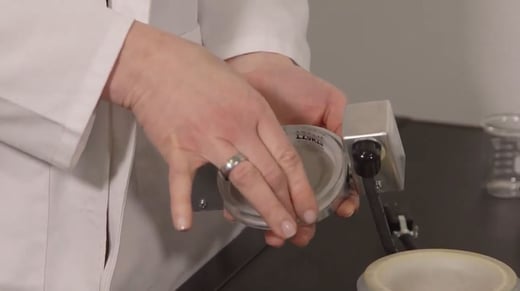How To Install the Horizontal Pulse Accessory (Sonic Sifter Separator)
If you use particle size analysis to separate and test fine particles, then odds are you have come across sonic sifter analysis. It provides lab managers and lab operators a means to mimic the performance of a wet sieve analysis without the need for water, which can sometimes prove messy.
Those testing finer material often must jump through extra hoops to ensure their particles property separate and find the mesh openings throughout the test sieve stack. Not only is this stressful, but it can be time-consuming as well.
Fortunately, sonic sifter separators, such as the L3P Sonic Sifter Separator, offer a workaround in the form of an attachment called the horizontal pulse accessory. But as with any piece of particle analysis equipment, you must understand what this attachment is and the intended use it was designed for to truly understand if it's right for you.
After working with hundreds of customers across dozens of industries for 140 years, W.S. Tyler has concluded that there is one common factor no matter what your process looks like: accuracy is key. This is why we strive to help labs perfect their setup and achieve accurate and repeatable results consistently.
To give you an all-encompassing outlook on what the horizontal pulse accessory is and how it can be used to test your material, this article will cover:
- What the horizontal pulse accessory is
- How the horizontal pulse accessory works
- How to install a horizontal pulse accessory
- Tips on cleaning the horizontal pulse accessory
- How much the horizontal pulse accessory costs
What Is the Horizontal Pulse Accessory?
The Horizontal Pulse Accessory is a Sonic Sifter Serpertor attachment that is used to help facilitate the testing of fine particles ranging from 45 microns down to 3 microns. Taking the place of a standard, ⅝" test sieve, this device works to break down clusters of agglomerated particles and minimize, help particles find openings in the sieve mesh, and minimize blinding.
How Does the Horizontal Pulse Accessory Work?
The Horizontal Pulse Accessory applies an agitating horizontal tapping on both sides of the test sieve stack in four-second intervals. This causes a shock wave throughout the sieve stack, further aiding the standard function of the sonic sifter.
Installing the Horizontal Pulse Accessory
To increase your chances of achieving accurate and repeatable results while using the Horizontal Pulse Accessory, it should be placed below the bottom-most sieve in the test sieve stack. That said, the following steps should be taken to properly install the device:

- Insert the bottom-most sieve by using a front-to-back sliding motion. When done correctly, the tapping mechanisms will be fully depressed.
- Place the sieve and pulse accessory on top of the fine particles collection hardware
- Build the remainder of your test sieve stack
- Place any spacers required to fill out your test sieve stack
- Place the top cone and add your sample material
- Top off the sieve stack with the diaphragm and secure it using the column lock
After properly installing the horizontal pulse accessory into your sieve stack, insert the stack into the sieve chamber and slide the door down as much as possible.
NOTE: The Horizontal Pulse Accessory receives power via a power cord. This cord will stick out of the chamber and hinder the door's ability to close fully.
At this point, the horizontal pulse accessory should be plugged into the included power supply.
You can now adjust the dials on the sonic sifter to begin testing as you usually would. When using the sift/pulse mode, ensure the pulses of the accessory are opposite of the actual sonic sifter device.
How To Clean the Horizontal Pulse Accessory
Cleaning the horizontal pulse accessory is simple. Any leftover particles or debris can be wiped clean using a damp cloth.
To preserve the longevity of the device, only use non-abrasive cloths when cleaning.
How Much Does the Horizontal Pulse Accessory Cost?
You can expect to pay $843 for the Horizontal Pulse Accessory. This, of course, is in addition to the cost of the Sonic Sifter Separator itself, as well as any test sieves you may need.
For those that require a 220vac system, a step-down transformer that converts the device's standard 110vac is available.
Accurate Sonic Sifter Analysis Results Start With Your Test Sieve Stack
The horizontal pulse accessory is a sonic sifter separate attachment that provides more agitation to the test sieve stack. It works to help finer particles known to agglomerate breakdown and find the mesh openings of the sieves.
But it's important to stress the importance of having a test sieve that is accurately assembled. From the order in which the sieves are placed to correctly assembling the hardware, assembling the test sieve stack of a sonic sifter spectator is a critical step to achieving dependable results.
W.S. Tyler understands that you want to achieve efficient results to save time and money so you can reallocate resources to other aspects of your production process.
To learn how you should be assembling a sonic sifter separator test sieve stack, read the following article:
About Ronnie Brown
Ronnie is the Content Writer for W.S. Tyler and has four years of experience as a professional writer. He strives to expand his knowledge on all things particle analysis and woven wire mesh to leverage his exceptional writing and graphic design skills, creating a one-of-a-kind experience for customers.



